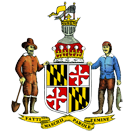| "Lynching" and "Legal Lynching" Defined
"Lynching" has likely evolved
from its original meaning to one that may uncomfortably, and often inaccurately
serve as an umbrella for many types of mob activity resulting in the death
of individuals. The term "lynch" likely has its origins in eighteenth
century Virginia. Charles Lynch, a Revolution Era Virginia Planter
and Justice of the Peace, became infamous among loyalists for his willingness
to circumvent legal convention and due process in efforts to frustrate
Toryism. In its earliest manifestations, "lynching" was a form of
vigilantism perpetrated for a number of reasons. During the time
period under consideration, lynchings often took place after court trials,
and in lieu of sentencing and/or capital punishment scheduled to be carried
out by the state. Though the act represented a usurpation of the
due process system (if only the last stages of it), lynchings often received
the support and approval of the general citizenry across lines of race,
ethnicity, and gender. Lynchings of this type -- presumably the most
common type -- appeared to benefit from a presumption of moral defensibility.
In many cases the guilt of the person lynched was beyond question.
Only in a few instances were lynch mob members pursued with any vigor or
zeal, even when authorities knew their identities.
During the time period under consideration,
lynchings were also perpetuated as a form of social control, especially
it seems, the maintenance of white supremacy. In such cases, "lynching"
not only connotated death by execution, but often execution with guilt
of the executed in doubt, or at least guilt for the crime for which he/she
was being punished. Often the lynched represented some threat to
the established order of white supremacy, or a potential threat thereto.
In these cases where the act of lynching seemed intended to serve as an
example to other possible social transgressors, the execution (or murder)
was accompanied by mutilation, dismemberment, and display. Historically,
one question has presented itself: at what point did lynching evolve from
its earlier, moralistic, vigilantism to its latter expression of criminalistic
social control? We hope to uncover the resources for entertaining
such a question.
"Legal Lynching" may be characterized
as capital punishments administered by the state with apparent disregard
for due process. A special look into "legal lynching" considers the
execution of John Snowden in 1919 by the State of Maryland. Snowden
was put to death after being falsely accused and convicted of murder.
During the summer of 2001, Snowden received a post-humus pardon from Governor
Parris N. Glendening.
In his Maryland, A Middle Temperament, 1634-1980, Robert Brugger points out:
The race control issue exposed the old fracture in Maryland between whites who lived amidst blacks and those who did not. Manners and mores in Southern Maryland and on the Eastern Shore kept the races sharply separate. As in the old days, whites there took a paternal, sometimes patronizing, view of the Negro. They treated politely, even kindly, the black who "kept his place." They could be quickly harsh with one who did not; Princess Anne natives, for example, ostracized John Wilson, a Wilmington Methodist churchman, because on his visits to the Negro academy he shook hands with blacks, ate with them, and called black men mister. Between 1889 and 1918 the 17 lynchings that took place in Maryland numbered no more than in Nebraska (there were 78 in Virginia, 368 in Georgia). But in 15 instances blacks were victims, often for an alleged assault on a white woman, and in 12 they took place on the Shore [i.e. Eastern Shore] or in the counties of Southern Maryland. ... (p422)
... it took only a black suspected of a heinous crime to put match to gasoline. One explosion occurred in December 1931 at Salisbury, wher Mack Williams had been accused of murdering his white employer. A mob broke into the hospital where he lay and lynched him. Many Marylanders joined [Governor] Ritchie in condemning this crime, but the local newspaper spoke of "outraged feeling" and "heroic methods"; hard up for support, townsmen also portrayed Williams ahs having been under the influence of communists. In November 1933 another lynching took place a few miles below Salisbury, in Princess Anne. About five thousand men thrust authorities aside and lynched a Negro who stood accused of attacking an elderly white woman. After hanging him, the mob tor apart and burned the body. In this case Attorney General William Preston Lane, Jr., an army veteran and son of a Hagerstown newspaper publisher, learned the names of the ringleaders, who were Wicomicans, and pressed the State's attorney for action. When nothing happened Ritchie sent five hundred troops of the 5th Maryland, led by General Reckord, to Salibury to serve warrants on the suspected mob leaders. Though Reckord captured four of the nine men on Lane's list (several were "on vacation" in Virginia), a mob gathered to taunt the militiamen. Local firemen, called on to cool off the mob, turned their hoses on the troops instead. Later a Wicomico judge released the suspects before they could be taken to Baltimore for trial. ..." pp. 508-509. |
